Twins are fascinating and mysterious beings, and it’s no wonder that people are curious about the various traits that they may share or differ in. One of the most common questions that people ask is whether twins can have different hair colors.
The answer is yes, Can twins have different hair colors, and there are several factors that contribute to this phenomenon.
Twins are individuals who share the same genetic material, but they can develop differently due to various factors. There are two types of twins: identical and fraternal.
Identical twins develop from a single fertilized egg that splits into two embryos, while fraternal twins develop from two separate eggs fertilized by two different sperm. The type of twins that have different hair colors are usually fraternal twins.
However, it is not impossible for identical twins to have different hair colors due to genetic mutations or other factors.
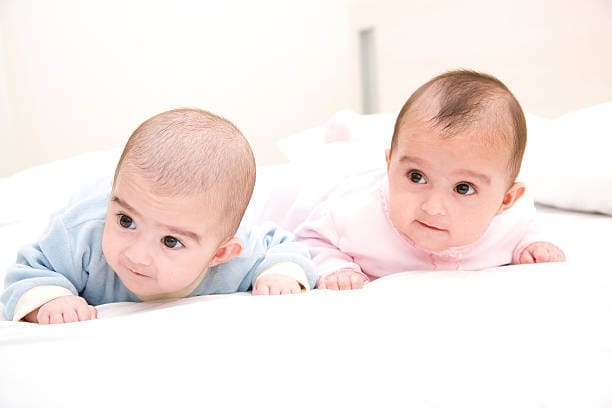
1. Understanding Twins
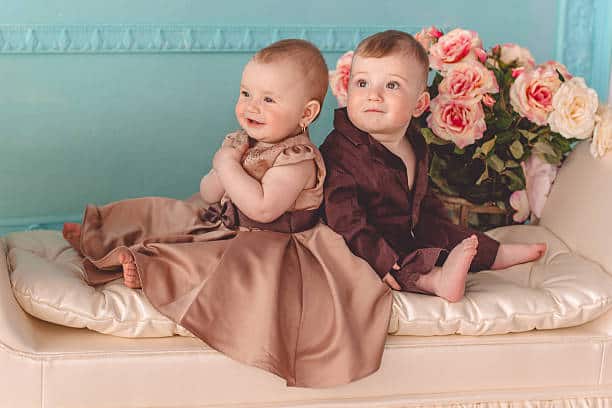
Twins are a fascinating phenomenon that has been the subject of scientific research for many years. There are various types of twins, such as identical, fraternal, monozygotic, dizygotic, semi-identical, same-sex fraternal twins, and sets of identical twins.
Understanding twins and the different types can help explain why twins may have different hair colors.
Identical twins, also known as monozygotic twins, are formed when a single fertilized egg splits into two separate embryos. These twins share the same genetic material and are always of the same sex.
Identical twins will always have the same hair color, eye color, and other physical characteristics.
Fraternal twins, also known as dizygotic twins, are formed when two separate eggs are fertilized by two different sperm. Fraternal twins can be of the same sex or different sexes and do not share the same genetic material.
Therefore, fraternal twins can have different hair colors, eye colors, and other physical characteristics.
Semi-identical twins are a rare type of twins that are formed when a single egg is fertilized by two sperm. These twins share some, but not all, of their genetic material.
Semi-identical twins can have different hair colors and other physical characteristics.
Same-sex fraternal twins are also formed when two separate eggs are fertilized by two different sperm, but they are of the same sex. These twins can have different hair colors and other physical characteristics, just like any other fraternal twins.
Sets of identical twins are rare but can occur when two fertilized eggs are implanted in the uterus at the same time. These twins are not genetically identical and can have different hair colors and other physical characteristics.
In conclusion, the type of twins a person has can affect whether or not they have different hair colors. Identical twins will always have the same hair color, while fraternal twins and other types of twins can have different hair colors and other physical characteristics.
2. Genetic Factors Influencing Hair Color

Hair color is determined by a complex interplay of genetic factors. The genetic code or blueprint for hair color is contained within the DNA of cells.
The genetic makeup of an individual determines the type and amount of melanin produced by the melanocytes in the hair follicles. Melanin is the pigment that gives color to hair, skin, and eyes.
There are two types of melanin: eumelanin and pheomelanin. Eumelanin is responsible for dark brown and black hair, while pheomelanin gives hair a red or blonde color.
The amount and type of melanin produced by the melanocytes are influenced by various genes.
The genes responsible for hair color are located on chromosomes 6, 10, and 16. These genes code for enzymes that are involved in the production of melanin.
The MC1R gene, located on chromosome 16, is particularly important in determining whether an individual will have red hair or not.
Hair color is also influenced by genetic mutations. Mutations in the genes responsible for melanin production can result in changes in hair color.
For example, a mutation in the MC1R gene can result in red hair, even if an individual has a genetic predisposition for dark hair.
Hair color is inherited in an autosomal dominant pattern. This means that if one parent has a dominant allele for a particular hair color, there is a 50% chance that their offspring will inherit that allele and have the same hair color.
However, if both parents have recessive alleles for a particular hair color, their offspring will have a different hair color.
In conclusion, hair color is determined by a complex interplay of genetic factors, including genes, DNA, genetic mutations, alleles, and gene expression. The amount and type of melanin produced by the melanocytes in the hair follicles are influenced by various genes located on chromosomes 6, 10, and 16.
Mutations in these genes can result in changes in hair color. Hair color is inherited in an autosomal dominant pattern.
3. Environmental Factors and Lifestyle Choices

While genetics is the primary factor in determining a person’s hair color, environmental factors and lifestyle choices can also play a role. Here are some of the ways in which these factors can influence hair color:
Sun Exposure
Exposure to sunlight can lighten hair color, particularly in people with lighter hair. This is because UV radiation breaks down the pigment in hair, causing it to fade.
However, the extent to which sun exposure affects hair color can vary depending on factors such as the intensity of the sunlight, the amount of time spent in the sun, and the person’s natural hair color.
Environmental Factors
Environmental factors such as pollution and chemicals can also affect hair color. Air pollution, for example, can cause hair to become dull and discolored over time.
Chemicals in water, such as chlorine, can also strip hair of its natural color. Additionally, exposure to certain chemicals in the workplace or home can cause hair color to change.
Lifestyle Choices
Certain lifestyle choices can also impact hair color. For example, smoking has been linked to premature graying of hair.
Additionally, poor nutrition can lead to hair discoloration and other hair-related issues. On the other hand, using hair dye can allow people to change their hair color, either temporarily or permanently.
Overall, while genetics is the primary determinant of hair color, environmental factors and lifestyle choices can also play a role. Understanding these factors can help people better understand their hair and make informed decisions about how to care for it.
4. Physical Traits and Appearance of Twins
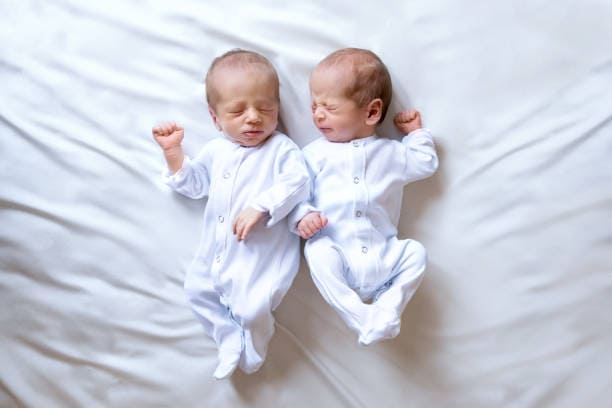
Twins are fascinating to study, especially when it comes to physical traits and appearance. One of the most intriguing aspects of twins is whether they have the same or different hair colors.
While identical twins often have the same hair color, fraternal twins can have different hair colors.
Hair color is determined by genetics, and identical twins have the same genetic makeup. Therefore, it is highly likely that they will have the same hair color.
However, fraternal twins come from two separate eggs fertilized by two separate sperm, which means they can have different genetic makeup, resulting in different hair colors.
Factors that cause hair color differences in identical twins include environmental factors, such as exposure to the sun, and random mutations that occur during development. Additionally, hair color can change over time due to aging or hormonal changes.
Aside from hair color, twins can have differences in other physical features, such as eye color, height, weight, skin color, hair type, and the presence of moles. These differences are a result of genetic and environmental factors, as well as random chance.
In conclusion, while identical twins usually have the same hair color, fraternal twins can have different hair colors due to differences in their genetic makeup. Twins can also have differences in other physical features, making each twin unique in their appearance.
5. Uncommon Cases and Rare Phenomena
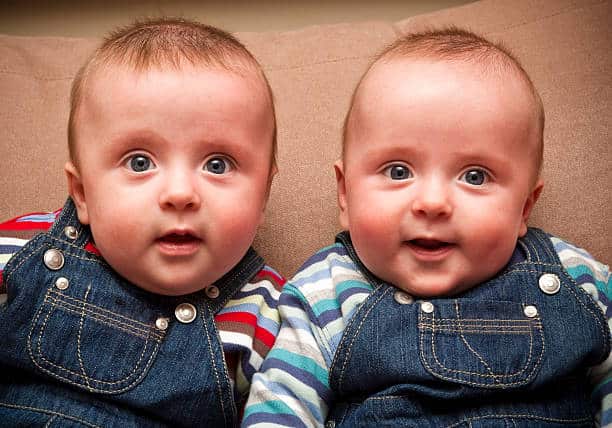
While it is rare for twins to have different physical appearances, it is not unheard of. There are several uncommon cases and rare phenomena that can lead to slight differences in identical twins or even fraternal twins that look identical.
Mirror twins, for instance, are identical twins who develop asymmetrically in the womb, resulting in mirror-image features. One twin may have a birthmark on the left side of their face, while the other has the same birthmark on the right side.
Similarly, one twin may have a dominant left hand while the other has a dominant right hand.
Another phenomenon that can lead to differences in identical twins is mosaicism. This occurs when one twin has a genetic mutation that the other twin does not.
As a result, one twin may have a different hair color or eye color than the other.
Fraternal twins, on the other hand, are more likely to have different physical appearances due to their genetic makeup. While identical twins come from a single fertilized egg that splits into two embryos, fraternal twins come from two separate eggs that are fertilized by two different sperm.
As a result, fraternal twins can have different hair colors, eye colors, and facial features.
It is also worth noting that even identical twins can have slight differences in their DNA due to random mutations that occur during cell division. These mutations are usually harmless and do not result in any noticeable physical differences.
Overall, while it is rare for twins to have different physical appearances, there are several uncommon cases and rare phenomena that can lead to slight differences in identical twins or even fraternal twins that look identical.
6. Epigenetic Factors and Hormonal Changes

Epigenetic factors and hormonal changes can also play a role in determining the hair color of twins. Epigenetic factors are modifications to DNA that can affect gene expression without changing the underlying genetic code.
These modifications can be influenced by environmental factors, such as diet, stress, and exposure to toxins.
Hormonal changes can also affect gene expression and hair color. For example, during puberty, the body produces more sex hormones, which can cause changes in hair texture and color.
Additionally, hormonal imbalances, such as those associated with thyroid disorders, can also affect hair color.
Research has shown that epigenetic factors and hormonal changes can contribute to differences in hair color between twins. For example, a study published in the journal Nature Genetics found that epigenetic modifications to a gene called KITLG were associated with differences in hair color between identical twins.
Overall, while genetics plays a significant role in determining hair color, epigenetic factors and hormonal changes can also contribute to differences in hair color between twins.
7. Family and Sibling Relationships
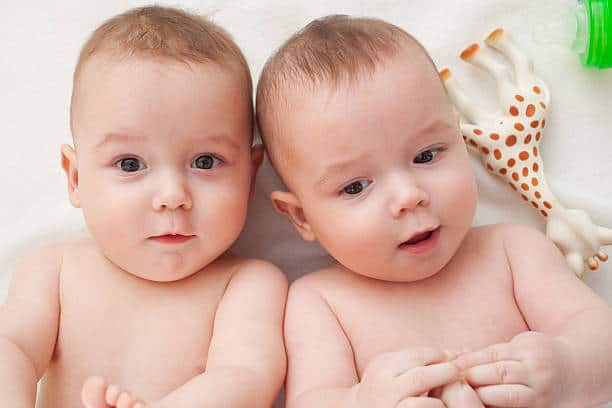
Twins are siblings who are born at the same time. They share a lot of similarities, including physical features, but they are not identical in every aspect.
One of the differences that may arise between twins is their hair color.
Hair color is determined by genetics, and the genes responsible for hair color are passed down from parents to their offspring. If both parents have the same hair color, their children are likely to have the same hair color as well.
However, if the parents have different hair colors, their children may inherit a combination of both colors, resulting in different hair colors for siblings.
In the case of fraternal twins, who come from two different eggs fertilized by two different sperm, it is possible for them to have different hair colors. This is because each twin inherits a unique set of genes from their parents, which may result in different hair colors.
On the other hand, identical twins, who come from the same egg fertilized by one sperm, are more likely to have the same hair color. This is because they have the same genetic makeup, and their hair color is determined by the same set of genes.
In conclusion, while it is possible for twins to have different hair colors, the likelihood of this happening depends on their genetic makeup. Family and sibling relationships play a crucial role in determining hair color, but it is not the only factor.
8. Medical Factors and Concerns
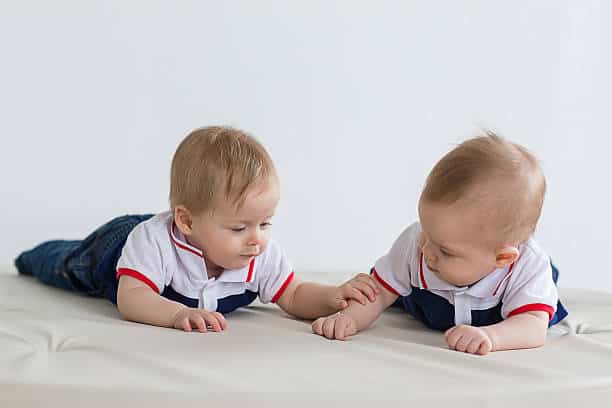
Medical factors can play a significant role in determining whether twins have different hair colors. Here are some of the factors that can affect the hair color of twins:
Chorion
The chorion is the outermost membrane that surrounds the fetus in the womb. In some cases, twins may have different hair colors if they have separate chorions.
This is because each chorion has its own blood supply, which means that each twin can receive different nutrients and oxygen levels. This can affect the development of the hair follicles, leading to different hair colors.
Ultrasound
Ultrasound is a medical imaging technique that uses high-frequency sound waves to create images of the inside of the body. During pregnancy, ultrasound can be used to determine the number of fetuses and their positions in the womb.
It can also be used to detect any abnormalities or complications.
In some cases, ultrasound can also reveal whether twins have different hair colors. This is because the ultrasound can detect the presence of separate chorions, which can indicate that the twins may have different hair colors.
Cancer
Cancer can also affect the hair color of twins. In some cases, cancer treatments such as chemotherapy can cause hair loss or changes in hair color.
If one twin has cancer and undergoes treatment, they may experience changes in their hair color while their twin does not.
Fertilized Eggs
Finally, the hair color of twins can also be affected by the fertilized eggs. When two eggs are fertilized separately, each egg can develop into a separate fetus with different genetic traits.
This can lead to different hair colors, among other differences.
In conclusion, medical factors can play a significant role in determining whether twins have different hair colors. Factors such as the chorion, ultrasound, cancer, and fertilized eggs can all affect the development of the hair follicles and lead to different hair colors in twins.
Related Posts:
Frequently Asked Questions
Do identical twins always have the same hair color?
Identical twins are formed when a single fertilized egg splits into two embryos. Because they come from the same fertilized egg, they have the same genetic material and are genetically identical. This means that identical twins typically have the same hair color, although there may be slight variations due to environmental factors or random genetic mutations.
Is hair heterochromia more common in twins?
Hair heterochromia, or the phenomenon of having different hair colors on different parts of the body, is not more common in twins than in the general population. While it is possible for twins to have hair heterochromia, it is not a common occurrence.
Can fraternal twins have different hair colors?
Fraternal twins are formed when two separate eggs are fertilized by two separate sperm. Because they come from different eggs, they are no more genetically similar than any other siblings. This means that fraternal twins can have different hair colors, just like any other siblings.
Are there any genetic factors that can cause twins to have different hair colors?
There are certain genetic factors that can contribute to differences in hair color between twins. For example, mutations in the MC1R gene can cause red hair, and variations in the TYRP1 gene can cause blond hair. However, these genetic factors are not specific to twins and can also affect non-twin siblings.
What are some other physical differences that can occur between twins?
In addition to differences in hair color, twins can also have differences in eye color, skin tone, facial features, and body size and shape. These differences can be due to genetic factors, environmental factors, or a combination of both.
Can environmental factors contribute to differences in hair color between twins?
Environmental factors such as exposure to sunlight, chemicals, and other toxins can affect hair color in both twins and non-twins. Additionally, differences in diet and lifestyle can also contribute to differences in hair color between twins.

Iesha is a loving mother of 2 beautiful children. She’s an active parent who enjoys indoor and outdoor adventures with her family. Her mission is to share practical and realistic parenting advice to help the parenting community becoming stronger.
